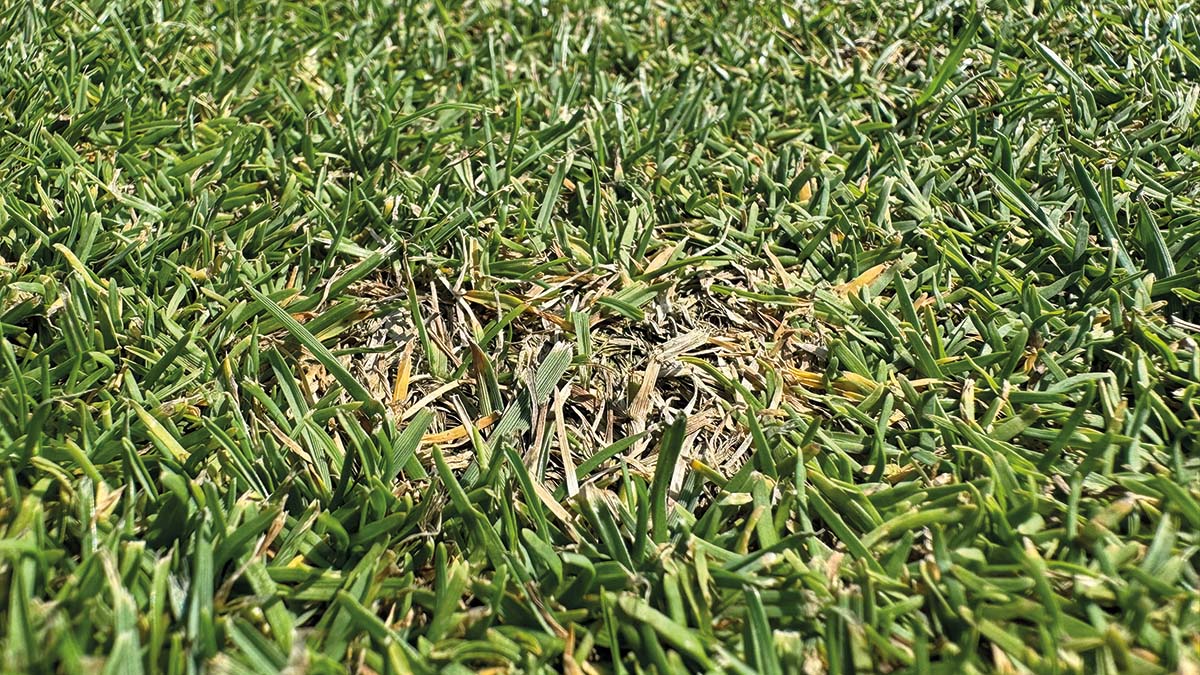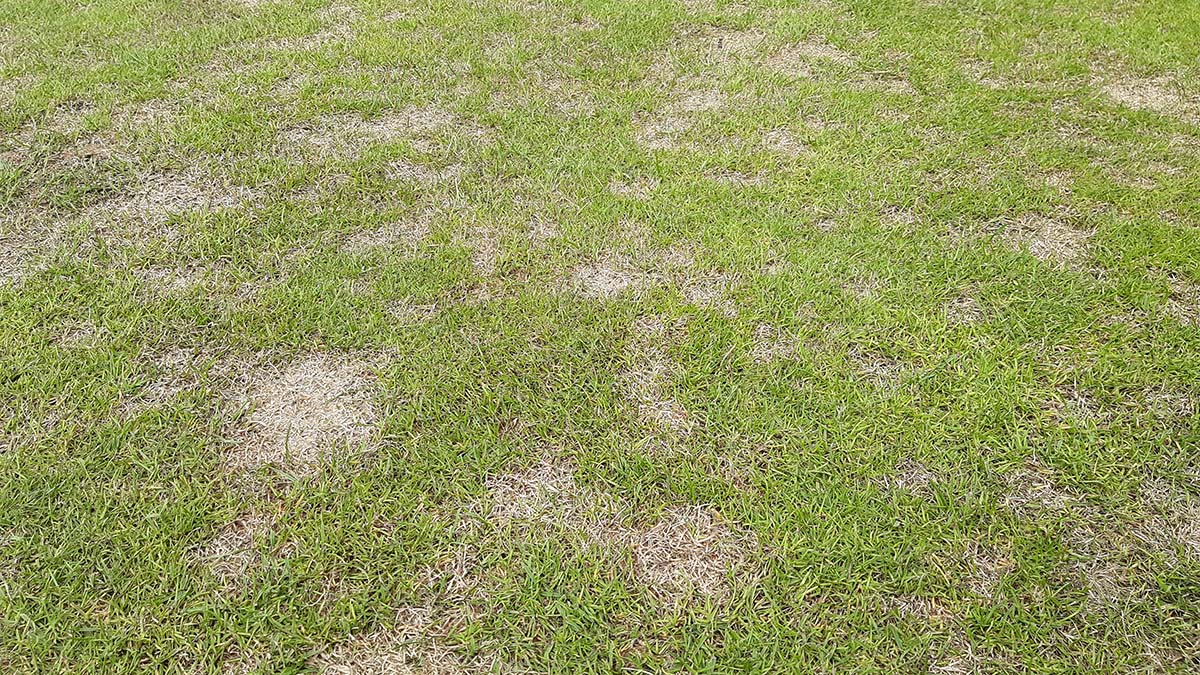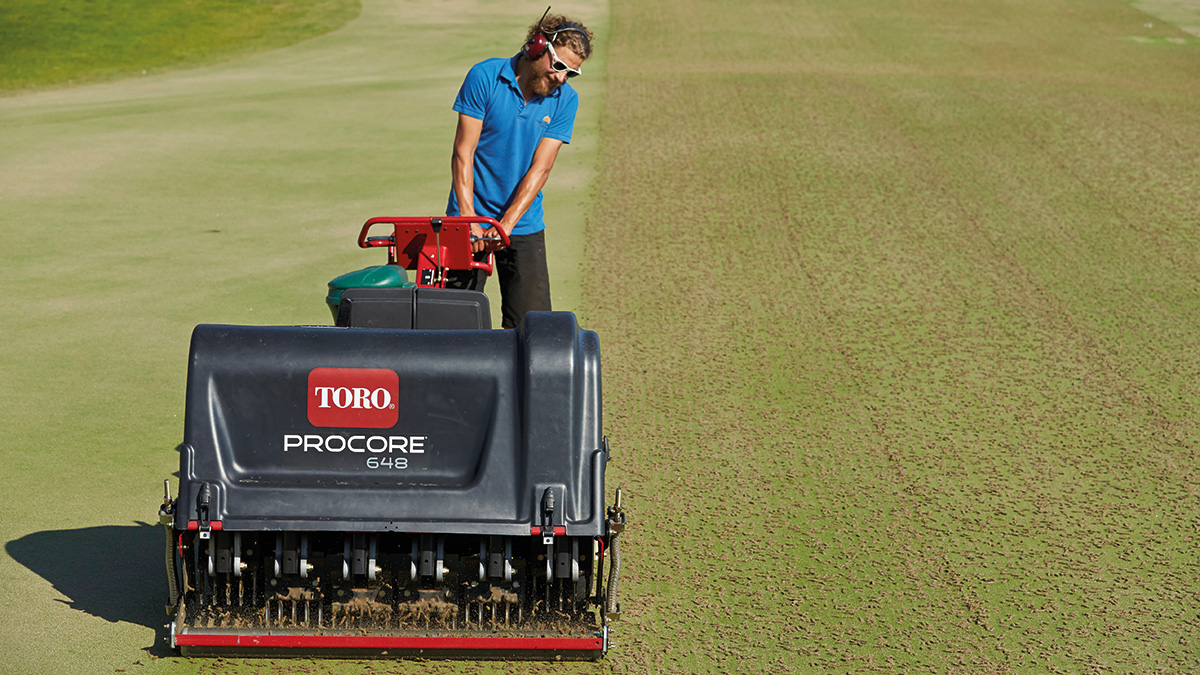- Homepage
- News and Features
- The turf disease thriving on climate change
The turf disease thriving on climate change
Glenn Kirby is a former course manager who became one of the world’s foremost turf scientists. In this feature he explains how climate change is driving the spread of one disease that causes huge damage to putting surfaces.

Glenn Kirby
Research Director
Where it’s warm and wet, diseases can overpower turf grass – and there is one that is starting to have a huge and unwanted impact on our golf courses as the climate changes.
You might not have heard of dollar spot before but, the chances are, you are already seeing it on your tees, fairways, and greens. You are going to hear a lot more about it in the future.
Dollar spot manifests itself as tanned spots. They start around the size of a coin (hence the name) and can grow and coalesce to cause larger areas of damaged turf. It has been a big problem for a long time in the warmer states of the USA.
So what challenges does dollar spot bring and what can your club do? We asked expert Glenn Kirby, technical manager for sports turf and landscape at Syngenta, to give us the lowdown.

Which parts of the golf course does dollar spot affect?
You can see dollar spot in all playing surfaces. It can definitely occur on greens, but greenkeeping teams generally have the resources to implement enough good greenkeeping cultural practices, such as daily dew removal, mowing and rolling to minimise the impact. In high-pressure environments and parts of the country that are prone to milder temperatures and high humidity, turf managers will need to rely on fungicide applications to support their wider strategies.
However, dollar spot is particularly challenging once you move out to tees, approaches, and fairways, where there generally isn’t the labour to put the cultural practices that are needed to combat the disease in place.
Greenkeepers don’t have the time or budget to invest in the fungicidal and integrated nutritional programmes required and, even if clubs could afford it, there are regulatory restrictions on some of the fungicide control options.
What does dollar spot do to the turf?
What starts as small discolouration will quickly develop and kill the plant. Once the plant is infected it will not recover. The disease can spread rapidly, so the objective of any programme is to stop it arising or, once you have it, minimise its opportunity to spread.
The upside is this disease is active during the warmer periods of the year, so recovery of surface quality is possible. If you manage it with good integrated management plans – utilising cultural practices, nutrition and fungicides where needed – you can get very quick recovery.
The challenge is: what tools does your golf course manager have to manage it? What are the available budgets and staffing levels? If a team or its budget is already stretched or if the turf is already under significant stress, then the damage caused could spiral out of control.
Fortunately we can manage the damage with integrated strategies that rely on good nutrition, management of stress and cultural practices. These help to remove that moisture from the leaf on a regular basis to reduce the speed dollar spot can develop.
How big a problem is this going to become in the UK?
The climate is moving in a direction that massively favours dollar spot. And the tools course managers have available to them are not increasing at the same rate. If you’re lucky, your course maintenance budget may be stable, but climatic changes mean that money isn’t going as far as it once did.
I also feel that golfer expectation is now very high. It’s possible it may have plateaued, but it’s certainly not going down and I still hear many stories of course managers having unrealistic expectations placed on them. I do worry about the pressures that might be placed on turf managers to solve a problem that they simply don’t have the tools to manage.

Are we going to see far more diseases like dollar spot as the climate shifts in the UK?
Climatically, the main driver for disease is leaf wetness. If you have a wet leaf, a disease pathogen can quickly spread. We’re quickly moving into a climate where we have disease pressure 12 months a year. As a relatively small, maritime-climate island, we are always going to have high humidity in the UK. It’s rarely really hot or really cold for any prolonged period, but we experience a high number of hours where our grass plant has a damp leaf.
That’s compounded by the generally warmer climate. Historically the cooler weather has saved us from this particular pathogen, but as we move towards a warmer climate we will move into different disease challenges.
We are now seeing another disease, grey leaf spot, on golf courses in northern France and Germany, which is a turf disease that is comfortable in that next temperature range that we haven’t yet experienced.
Increasing disease pressure is a massive issue and at the same time there is an underlying societal pressure to use less fungicides. Regulatory authorities are regularly reviewing legislation and many course managers fear the impact of reduced fungicide availability.
Fungicides are of immense value to help with managing damaging disease, but we’ve got to move away from solely relying on that kind of technology and move towards integrated solutions.
To maintain high-quality playing surfaces in the future we will need to look towards new techniques and tools, such as digital modelling. That way we can understand when the pressure is coming and do a better job of timing disease control actions.

It’s going to mean better understanding of nutrition programmes, along with more time, effort and resources committed to managing the organic matter that the spore resides in. It’s going to be more top dressing and labour-intensive work. Aeration and topdressing may be unpopular among golfers, but this labour-intensive work is going to be more important than ever.
That’s all going to have a knock-on impact on both budgets and interruption to the golfer - which I think people don’t talk about enough - and also on costs.
The climate is changing and this is having an impact on turf and serious implications for greenkeeping teams. Sadly, the expectations being placed on them remains higher than ever.
The future is challenging, but if we look to more research for solutions and more integrated strategies, we can continue to provide great playing surfaces.
What is dollar spot?
It’s a disease whose spores happily survive in soils that contain organic matter (thatch), such as golf course playing surfaces. Dollar spot will wait for the right climatic conditions before being triggered. These are warm temperatures and wet leaves, so the weather conditions we’re increasingly seeing in the UK are becoming more suitable for this particular pathogen.
It’s an especially challenging disease to manage because it is most prevalent during the main playing season. Other diseases we’ve traditionally suffered have tended to be active during the cooler winter months, but dollar spot is at its most active in the months of June, July and August.
Due to milder winters, we also don’t get the cold breaks that used to reduce the spore populations. When the warmer temperatures arrive in late spring or early summer, the disease populations are much greater and that gives it a head start.
Author

